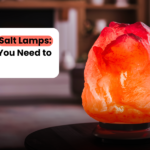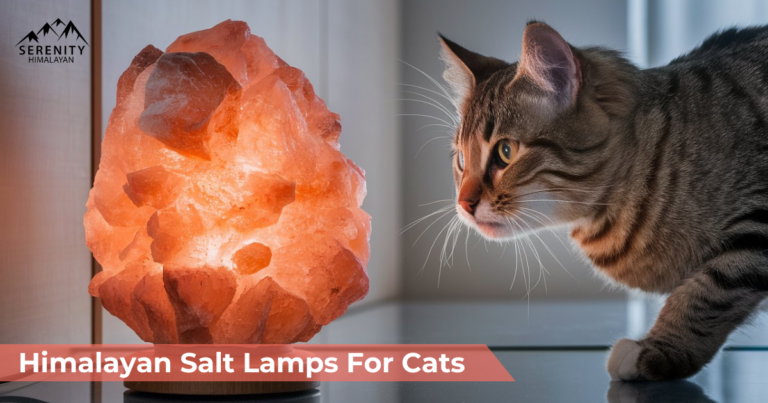Salt lamps are popular for their warm glow and supposed health benefits. However, if you’re a cat owner, you might wonder if these beautiful objects are safe for your feline friends.
In this article, we’ll dive deep into the relationship between salt lamps and cats, exploring why they are so popular, potential dangers, and how to protect your pets.

1. Why are Himalayan Salt Lamps Becoming So Popular?
Himalayan salt lamps have surged in popularity in recent years, often touted for their aesthetic appeal and health benefits. Here’s why they’ve become household favourites:
- Aesthetic Appeal: The soft, amber glow of salt lamps creates a cosy and tranquil atmosphere, making them popular as decorative pieces.
- Purported Health Benefits: Many believe that salt lamps can purify the air, reduce allergens, and even improve mood and sleep by releasing negative ions.
- Natural and Unique: Each Himalayan salt lamp is unique, carved from pink salt crystals found in the Khewra Salt Mine in Pakistan, making them one-of-a-kind pieces.
However, while these benefits attract many buyers, pet owners, especially cat lovers, need to be cautious.
2. Are Salt Lamps Bad for Cats?
Yes, salt lamps can be harmful to cats. Cats are naturally curious creatures and may be tempted to lick or nibble on these lamps. Here’s why this is problematic:
- Salt Toxicity: Himalayan salt lamps are essentially large blocks of salt. Ingesting even small amounts can lead to salt poisoning in cats, causing symptoms like vomiting, diarrhoea, lethargy, and in severe cases, seizures or death.
- Physical Harm: If a salt lamp is knocked over, it can cause injury to your pet. These lamps are often heavy and can break into sharp pieces.

3. Why Are Salt Lamps Dangerous for Cats?
Several factors contribute to the potential dangers of salt lamps for cats:
- High Salt Concentration: Himalayan salt lamps contain a high concentration of salt, which can be lethal if ingested in large quantities by cats.
- Accessibility: Cats can easily reach places where salt lamps are kept, making them more likely to come into contact with these potentially hazardous objects.
- Attractiveness: The texture and taste of the salt can attract cats, leading them to lick or chew on the lamps, increasing their risk of salt toxicity.
4. How to Keep Your Cat Away from the Salt Lamp?
To ensure your cat’s safety while enjoying the benefits of your Himalayan salt lamp, follow these precautions:
- Placement: Keep the salt lamp in a location that is inaccessible to your cat. High shelves or rooms that are off-limits to your pets are ideal places.
- Secure the Lamp: Ensure that the lamp is stable and cannot be easily knocked over by a curious pet.
- Cover the Lamp: When not in use, cover the lamp with a cloth or a lamp cover to prevent your cat from licking it.
- Supervision: Monitor your cat’s behavior around the lamp and intervene if they show too much interest.
- Alternative Lighting: Consider using other types of ambient lighting that do not pose a risk to your pets.

5. Conclusion
Himalayan salt lamps can add a beautiful and calming ambiance to your home, but they can pose serious risks to your feline companions. Understanding these dangers and taking appropriate steps to safeguard your pets can allow you to enjoy your salt lamp without worry. Always prioritize the safety and well-being of your pets when incorporating new elements into your home.














